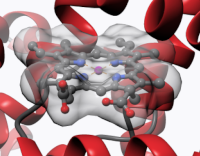Reading List
A list by Biophysics Colab
Articles that are being read by Biophysics Colab.

Showing page 1 of 67 pages of list content
-
Structural and Functional Insights into Alkaline-pH Sensing by the Alka Channel
This article has 4 authors: -
Structural mechanisms of pump assembly and drug transport in the AcrAB-TolC efflux system
This article has 3 authors: -
The molecular architecture of the aquaglyceroporin gating system in Saccharomyces cerevisiae
This article has 6 authors: -
-
pH-dependent regulation in SLC38A9
This article has 3 authors: -
-
MDFIC2 is a sensory neuron-specific PIEZO channel auxiliary subunit
This article has 14 authors: -
Opsins are Phospholipid Scramblases in All Domains of Life
This article has 6 authors: -
Molecular determinants of low affinity complexes formed by the electrical synapse proteins Connexin 36 and ZO-1
This article has 8 authors: -
Inhibition mechanism of pancreatic KATP channels by centipede toxins
This article has 5 authors: -
-
-
Live-cell quantitative monitoring reveals distinct, high-affinity Gβγ regulations of GIRK2 and GIRK1/2 channels
This article has 19 authors: -
Multiple Allosteric Sites Allow for Synergistic Enhancement of GPCR Signaling
This article has 22 authors: -
Hydration Network Drives Activation and G Protein Selectivity in GPR174
This article has 11 authors: -
Role of Water Models in Simulations of Ion Conduction in Potassium Channels
This article has 5 authors: -
Cryo-EM structure of CLCA1 identifies CLCA1 as a founding member of a novel metzincin family
This article has 8 authors: -
Structure of the G q -coupled adhesion receptor ADGRL4, a GPCR implicated in cancer
This article has 7 authors: -
-
Structure-guided allosteric modulation of the delta opioid receptor
This article has 18 authors: